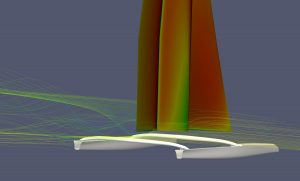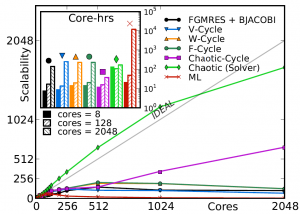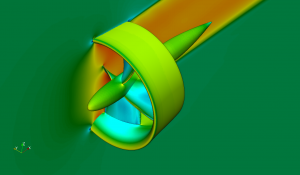The fifth generation of the University of Southampton’s supercomputers Iridis 5 has come on line. It has 20,000-cores and has a peak performance of 1.3 Petaflops. A ‘flop’ is floatng point operations per second such as adding two real numbers in a second and Peta is 1 quadrillion eg 10 to the power 15 .

The 20,000-core machine was designed and built by high performance computing (HPC) integrator OCF using ThinkSystem SD530 servers from Lenovo. It has already emerged as one of the most powerful systems in the world, entering the Top500 supercomputer list in November,at number 251.

One of the key users over many years is our own Wolfson Unit for Marine Technology and Industrial Aerodynamics(WUMTIA) who provide a variety of Computational Fluid Dynamics(CFD) services to industry. Dr Sandy Wright, principal research engineer, Wolfson Unit at the University of Southampton comments in an OCF press release. “We have a worldwide customer base and have worked with the British Cycling Team for the last three Olympic games, as well as working with teams involved in the America’s Cup yacht race. In the past 10 years, Computational Fluid Dynamics (CFD) has become a perfectly valid commercial activity, reducing the need for physical experimentation. CFD gives as good an answer as the wind tunnel, without the need to build models, so you can speed up research whilst reducing costs. Iridis 5 will enable the Wolfson Unit to get more accurate results, whilst looking at more parameters and asking more questions of computational models.”

PhD students in FSI are alo important users of the Iridis computers. One example is Dr James Hawkes who recently completed his PhD in collboration with Dr Guilherme Vaz of the Refresco team at MARIN on ‘Chaotic methods for the strong scalability of CFD‘. His work investigated how best to design CFD codes of the future to work across thousands of cores.

